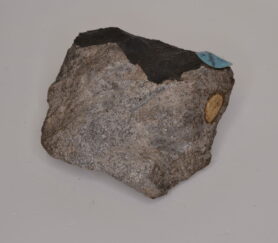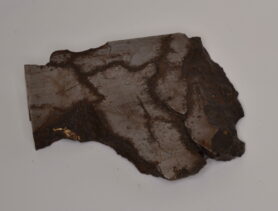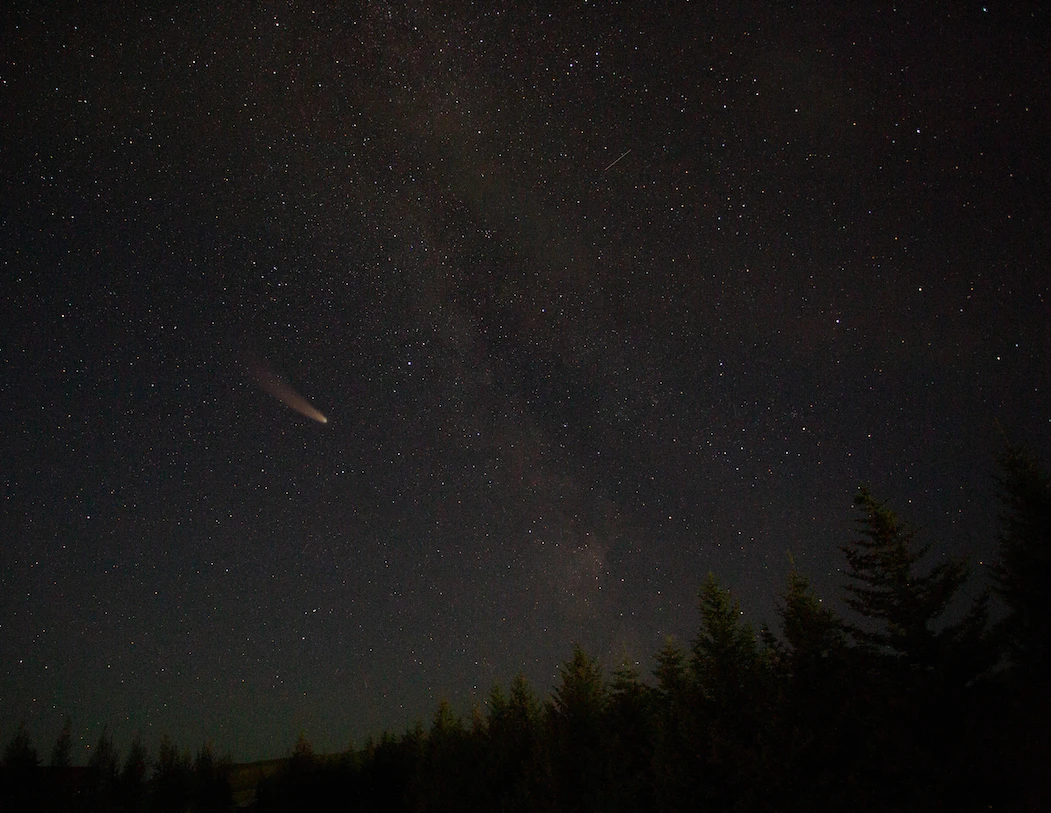Ametuer’s guide to meteorite identification
Meteorites provide a unique window into the formation and evolution of the solar system and are therefore of great scientific interest. However, identifying meteorites can be challenging, as they can often look similar to terrestrial rocks. In this article, we will discuss several methods for identifying meteorites and what to look for when trying to distinguish them from Earth rocks.

Stannern Meteorite (Eucrite) with fusion crust. Copyright: Utrecht University
The first step in identifying a meteorite is to determine its density. Meteorites are much denser than most terrestrial rocks, as they are composed mainly of iron-nickel alloys and stony silicates. This can be determined by measuring the rock’s mass and volume and calculating its density. If the rock has a density greater than 3 g/cm3, it is likely to be a meteorite.
Another method of identifying meteorites is to look for signs of melting and/or fusion. Meteorites experience extreme heat and pressure upon entering the Earth’s atmosphere, causing the surface to melt and fuse. This can result in a black, fusion crust, which is a distinctive feature of meteorites. The fusion crust is usually thin and covers the entire surface of the rock.
The presence of chondrules, small round or ovoid structures found in some meteorites, is another key feature that can be used to identify meteorites. Chondrules are composed of minerals that formed in the early solar system and provide valuable information about the conditions under which the solar system formed. They are not found in terrestrial rocks.
Meteorites can also be identified by their mineral composition. The majority of meteorites are either stony (made up of silicate minerals) or iron-nickel. Stony meteorites are composed mainly of silicates such as feldspar and pyroxene, while iron-nickel meteorites are composed mainly of the metals iron and nickel. A meteorite’s mineral composition can be determined through X-ray diffraction analysis or electron microscopy.

Mount Joy meteorite (Iron IIAB). Copyright: Utrecht Univeristy
Magnetic properties can also be used to identify meteorites. Most meteorites contain iron-nickel, which makes them strongly magnetic. By measuring the rock’s magnetic properties, it is possible to determine if it is a meteorite. However, some terrestrial rocks are also magnetic, so this method is not foolproof.
Finally, it is important to consider the rock’s origins when trying to identify a meteorite. Meteorites come from space and are not found in the same geographic locations as terrestrial rocks. If a rock is found in an area that is known to have a high concentration of meteorites, such as the Antarctic or the Sahara Desert, it is more likely to be a meteorite.
In conclusion, identifying meteorites can be challenging but several methods can be used to distinguish them from terrestrial rocks. These methods include a combination of determining the rock’s density, looking for signs of melting and fusion, searching for chondrules, analyzing the mineral composition, examining magnetic properties, and considering the rock’s origins. Lastly, it is crucial to remember that while following these guidelines may give you hints regarding the identification, it is essential to have the rock analyzed by a reputable meteorite testing laboratory to be absolutely certain.
References and Further reading:

